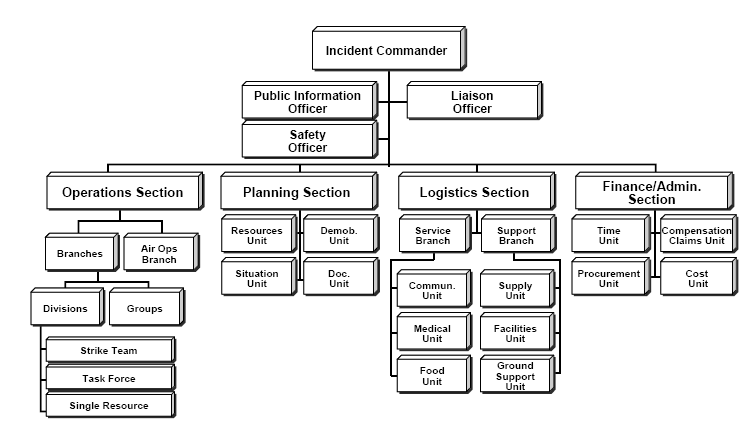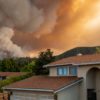When working a wildfire incident, knowing who you report to and who is expected to report to you is imperative to maintain effective and efficient incident management. A system has been developed and honed by wildland firefighters over the years into what is known as the Incident Command System (ICS).
ICS is typically broken out into five major functional areas:
- Command – Controls overall incident management
- Operations – “Boots on the ground”, accomplishes objectives
- Planning – Manages planning process
- Logistics – Provides incident support, ensures Operations has what they need to do their job
- Finance/Admin – Manages funds for the incident
The Incident Command System was developed by CAL FIRE following a series of catastrophic wildfires in the 1970s. The studies of these events concluded response problems related to communication and management issues, rather than a lack of resources or skills and knowledge. Now, ICS has been implemented in Emergency Operations Centers across the country, as well as in other fields such as healthcare and business.
The structure of ICS is easily adaptable to many types of incidents. As an example, the Federal Emergency Management Agency (FEMA) relies on ICS when responding to disasters. As an incident develops, more units and divisions are added based upon functional or geographic need. The adaptability and flexibility of ICS allows for efficient expansion and seamless transition throughout the duration of an incident.

(Source: Federal Emergency Management Agency – ICS Resource Center)
Although these Sections (known as General Staff) are lateral and report up to the Incident Commander, they rely on each other to achieve the common goal and support each other. Operations needs Logistics to provide resources (people, machinery/vehicles, food/water) to achieve the incident objectives that the Planning team documents and tracks to make sure everyone is working toward a common goal. Meanwhile, Finance/Admin keeps the incident within allowable budgets and ensures proper time tracking. All of this is overseen by and reported to the Incident Commander.
Depending on the incident, some timelines are longer and more developed than others. A small wildfire may be put out within a couple hours whereas others may last days, weeks, or months (such as the Chelan, WA fires of 2015). Throughout the incident, roles can easily be added or closed down as needed due to the flexible nature of the Incident Command System.
For further information on ICS and available training courses, please visit: FEMA’s ICS Resource Center.
![]()




3 Comments